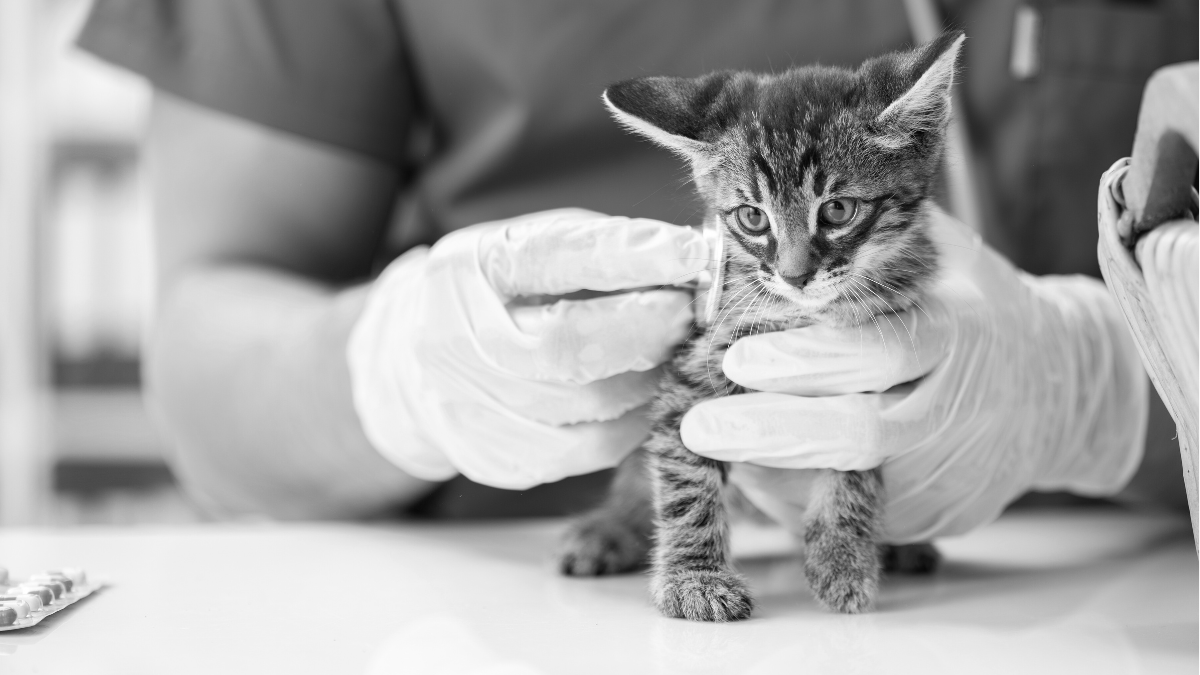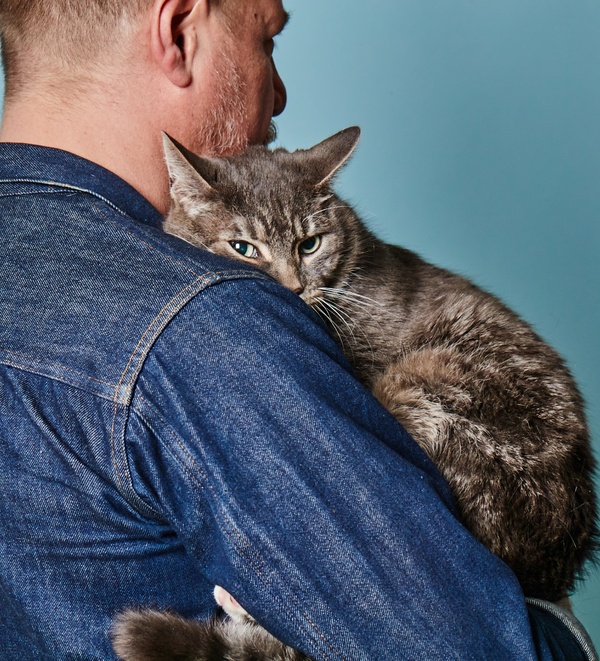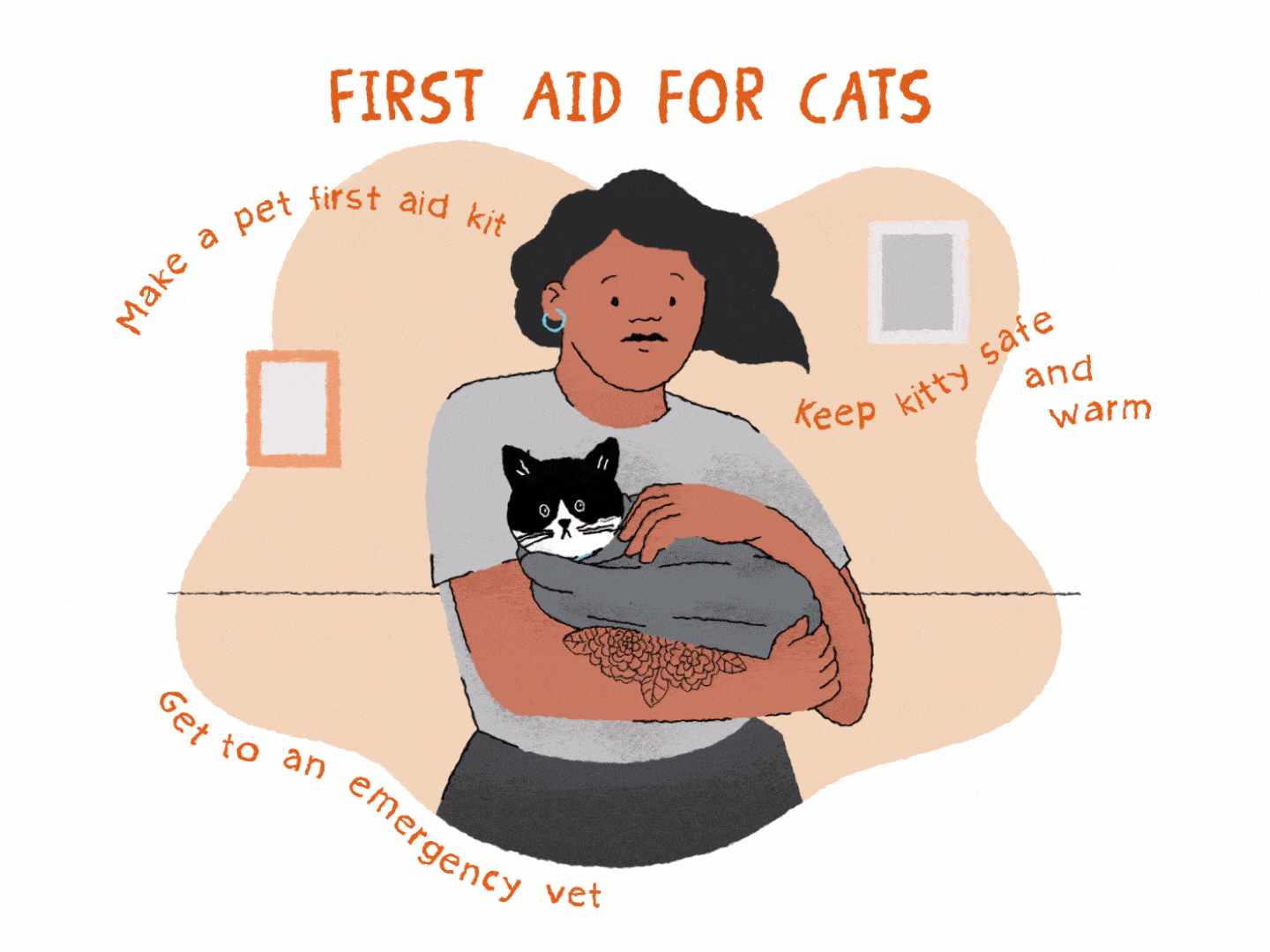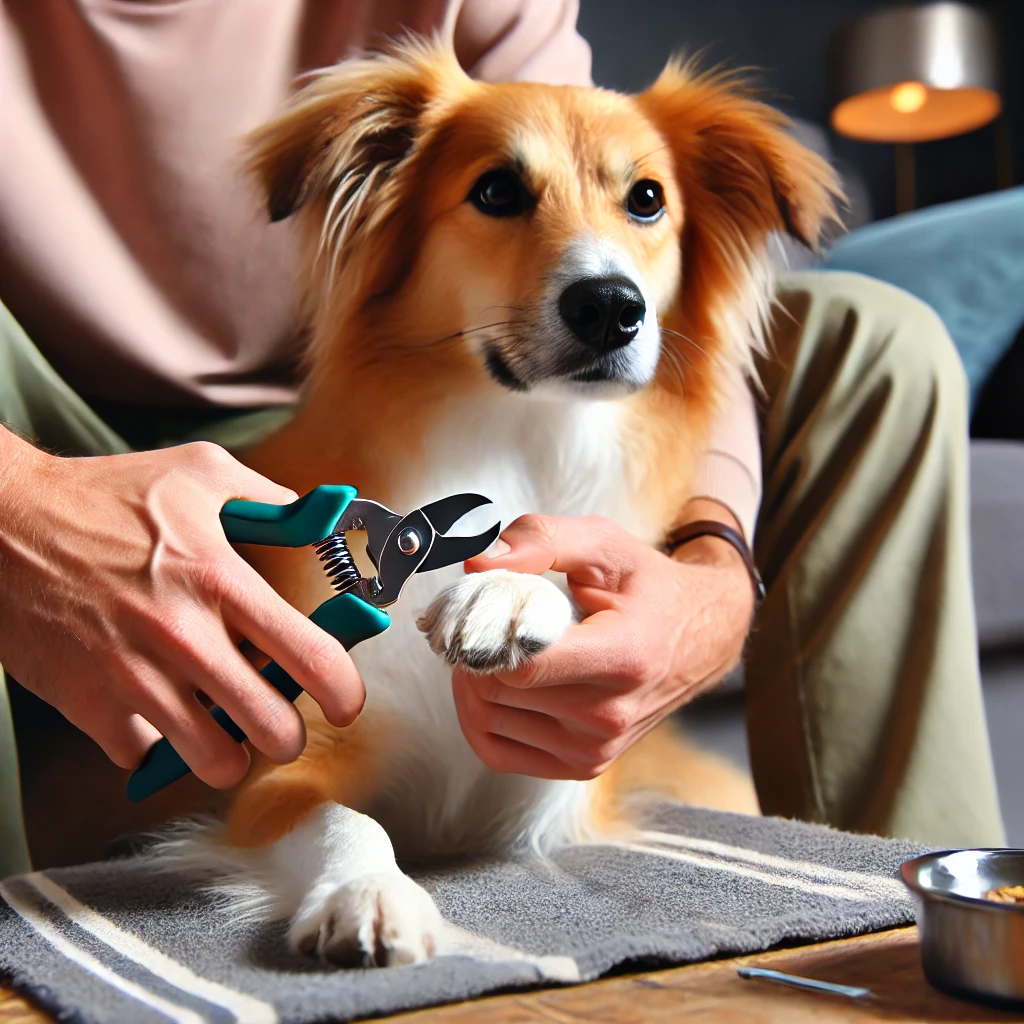Basic kitten and cat first aid
For common cat emergencies, apply pressure to stop bleeding and keep the cat calm. Seek veterinary assistance immediately.
Cats can encounter various emergencies, and knowing basic first aid can save your pet’s life. From wounds and choking to poisoning and seizures, quick and effective action is crucial. Keep a first aid kit handy with essentials like bandages, antiseptic, and tweezers.
Learn how to handle your cat gently to avoid further injury. By staying calm and prepared, you can provide the necessary care your cat needs in an emergency. Knowing these basic tips ensures that you’re ready to help your feline friend when they need it most. Always follow up with professional veterinary care for comprehensive treatment and advice.

Credit: felius.org
Introduction To Feline First Aid
Knowing basic first aid for cats can save your pet’s life. Cats can get into accidents or fall ill suddenly. Immediate care can prevent serious complications. Learn essential tips to handle emergencies. This knowledge can make a big difference for your furry friend.
Importance Of First Aid For Cats
First aid for cats is crucial. It can stabilize your cat until you get to a vet. Quick action can reduce pain and prevent infections. Understanding first aid helps you stay calm in emergencies. It prepares you to handle common cat issues effectively.
When To Seek Professional Veterinary Care
Some emergencies require professional veterinary care. Always consult a vet if your cat is bleeding heavily. Seek help if your cat has trouble breathing. Go to a vet if your cat is in severe pain. A professional can provide the necessary treatment.

Credit: bondvet.com
Assessing The Situation
When your cat faces an emergency, the first step is to assess the situation. This helps you make the right decisions quickly. Knowing how to assess an emergency can save your cat’s life. Start by looking at the surroundings and the cat’s condition.
Safety First: Protecting Yourself And The Cat
Before helping your cat, ensure you are safe. Cats in distress might scratch or bite. Wear gloves if available. Speak in a calm voice to soothe the cat. Avoid sudden movements.
If the cat is bleeding or in pain, be extra cautious. Use a towel or blanket to gently wrap the cat. This limits the cat’s movement and helps you handle it safely.
Recognizing Signs Of Distress In Cats
Knowing the signs of distress can help you act quickly. Watch for these common signs:
- Heavy breathing or panting
- Limping or not moving
- Bleeding or open wounds
- Vomiting or diarrhea
- Swollen or painful areas
- Seizures or twitching
Check the cat’s gums. Pale or blue gums indicate a serious issue. Also, observe the cat’s eyes. Dilated pupils can signal pain or fear.
If your cat displays any of these signs, seek help immediately. Knowing these signs can make a difference.
Creating A Cat First Aid Kit
Every cat owner should have a cat first aid kit at home. This kit can save your cat’s life during emergencies. It’s crucial to have the right items and know how to use them. Here’s how to create a comprehensive first aid kit for your feline friend.
Essential Items For Your Kit
- Gauze Pads – For cleaning wounds and stopping bleeding.
- Adhesive Tape – To secure dressings and bandages.
- Antiseptic Wipes – To disinfect wounds.
- Hydrogen Peroxide – To induce vomiting if advised by a vet.
- Digital Thermometer – To check your cat’s temperature.
- Petroleum Jelly – For lubricating the thermometer.
- Scissors – To cut bandages and tape.
- Disposable Gloves – To maintain hygiene while treating wounds.
- Tweezers – For removing splinters or ticks.
- Saline Solution – To clean wounds or eyes.
- Emergency Blanket – To keep your cat warm.
- First Aid Manual – A guide to handle cat emergencies.
Maintaining And Restocking Your First Aid Kit
Regularly check your first aid kit to ensure everything is in good condition. Replace items that are used, damaged, or expired. Keep a checklist of all items in the kit. This helps in quick restocking.
Store your kit in a safe, accessible place. Everyone in the household should know its location. Keep your vet’s contact information in the kit. Update this information if it changes. Regular maintenance ensures you are always prepared for any cat emergency.

Credit: justcatsclinic.com
Handling Common Injuries
Cats are curious creatures. This curiosity often leads to accidents and injuries. Knowing how to provide first aid for common injuries can save your cat’s life. Here are essential tips for handling common injuries in cats.
Cuts And Scrapes
Cats can get cuts and scrapes from various sources. Follow these steps to treat them:
- First, clean the wound with warm water and mild soap.
- Next, use a sterile gauze to stop any bleeding.
- Apply an antiseptic ointment to the cut or scrape.
- Cover the wound with a bandage to keep it clean.
- Monitor the wound daily for signs of infection.
If the wound is deep or bleeding heavily, seek veterinary care immediately.
Sprains And Broken Bones
Sprains and broken bones are more serious. They need immediate attention. Here are steps to provide first aid:
- First, keep your cat as still as possible.
- Next, gently wrap the injured area with a soft cloth.
- Use a splint made from a stick or rolled-up newspaper for support.
- Do not try to reset the bone yourself.
- Transport your cat to the veterinarian carefully.
Always handle your cat gently to avoid causing more pain or injury.
Knowing these basic first aid tips can help you act quickly during emergencies. Your prompt action can make a big difference in your cat’s recovery.
Dealing With Poisoning And Toxicity
Dealing with poisoning and toxicity in cats is crucial for every pet owner. Cats are curious creatures and can ingest harmful substances. Knowing what to do can save your cat’s life. This section provides essential first aid tips for handling poisoning emergencies.
Identifying Poisonous Substances
Many household items can be toxic to cats. Be aware of these common toxic substances:
- Plants: Lilies, poinsettias, and philodendrons are harmful to cats.
- Foods: Chocolate, grapes, and onions can cause severe reactions.
- Chemicals: Antifreeze, cleaning products, and medications are dangerous.
Recognize the symptoms of poisoning. These include:
- Vomiting
- Diarrhea
- Drooling
- Tremors
- Seizures
- Difficulty breathing
Immediate Steps To Take
If you suspect your cat has ingested a toxic substance, act quickly. Here are the immediate steps:
- Remove the cat from the source of poison.
- Check the cat’s mouth and remove any remaining substance.
- Call your veterinarian or an emergency pet clinic.
- Follow the vet’s instructions carefully.
Do not induce vomiting unless directed by a vet. Some substances cause more harm if vomited.
Keep the packaging of the substance ingested. This helps the vet with treatment.
| Substance | Symptoms |
|---|---|
| Chocolate | Vomiting, diarrhea, rapid breathing |
| Lilies | Drooling, vomiting, lethargy |
| Antifreeze | Seizures, excessive thirst, lethargy |
Keep emergency numbers handy. This includes your vet and the local emergency clinic. Always have a first aid kit for your cat. This kit should include activated charcoal, gauze, and a digital thermometer.
Choking And Breathing Emergencies
Cats can sometimes choke on small objects or food. This can be a scary situation. It is essential to act fast to save your cat’s life. Knowing basic first aid can make a difference. Here, we will discuss the Heimlich Maneuver for Cats and CPR for Felines.
Heimlich Maneuver For Cats
If your cat is choking, you must act quickly. Here’s how to do the Heimlich Maneuver for cats:
- Check your cat’s mouth for any visible object.
- If you see an object, try to remove it gently.
- If the object is not visible, hold your cat with its back against your chest.
- Place your hands just below the ribs.
- Give a quick, firm squeeze to push air out.
- Check the mouth again to see if the object is dislodged.
Cpr For Felines
If your cat is not breathing, you may need to perform CPR. Follow these steps for CPR on felines:
- Lay your cat on its side.
- Check for a heartbeat by placing your ear near the chest.
- If no heartbeat, place your hands over the cat’s heart.
- Press down firmly but gently, around 100 compressions per minute.
- Give two rescue breaths by closing the mouth and breathing into the nose.
- Repeat the process until the cat starts breathing or help arrives.
Having knowledge of these first aid techniques can save your cat’s life. Always keep calm and act swiftly during emergencies.
Overcoming Heatstroke And Hypothermia
Heatstroke and hypothermia are serious emergencies for cats. Knowing how to handle these situations can save your cat’s life. Below are simple tips on recognizing and treating these conditions.
Signs Of Heatstroke
Heatstroke occurs when a cat’s body overheats. Look for these signs:
- Heavy panting
- Drooling
- Red gums
- Rapid heartbeat
- Vomiting
- Weakness or collapse
If your cat shows any of these signs, act fast. Move your cat to a cool area. Offer small amounts of water. Use a damp cloth to gently cool your cat’s body.
Treating Hypothermia
Hypothermia happens when a cat’s body gets too cold. Watch for these symptoms:
- Shivering
- Cold ears and paws
- Weakness
- Slow breathing
- Sluggishness
If your cat has hypothermia, warm them up. Wrap your cat in warm blankets. Use a hot water bottle, but cover it with a towel. Give your cat warm fluids if possible.
Always contact your vet for further advice. Quick action can make a big difference.
Preventative Measures And Training
Taking care of your cat’s health involves more than just feeding and grooming. Preventative measures and first aid training can keep your feline friend safe. Here are some tips on how to create a safer environment and get trained in cat first aid.
Cat-proofing Your Home
Cat-proofing your home can prevent many common emergencies. Here are some steps to follow:
- Secure loose wires to avoid chewing hazards.
- Store toxic plants and substances out of reach.
- Install screens on windows to prevent falls.
- Keep small objects like buttons and beads away.
- Close lids on toilets and trash bins.
Creating a safe environment helps prevent injuries and accidents. A little effort goes a long way.
First Aid Training Opportunities For Cat Owners
Knowing basic first aid can save your cat’s life. Here are some ways to get trained:
| Training Option | Description |
|---|---|
| Online Courses | Learn at your own pace with video tutorials. |
| Workshops | Hands-on training with experts. Check local pet stores. |
| Books and Guides | Many detailed guides are available for quick reference. |
Choose the training method that suits you best. Being prepared can make all the difference in an emergency.
Frequently Asked Questions
What To Do With Your Cat In An Emergency?
Stay calm. Secure your cat in a carrier. Contact your vet immediately. Follow professional instructions. Keep emergency supplies ready.
What Is One Of The Most Common Things Seen In Cats Coming For Emergency Care?
One of the most common emergencies in cats is urinary blockage. This condition requires immediate veterinary attention.
What Is The First Aid Cpr For A Cat?
To perform CPR on a cat, check for breathing and heartbeat. If absent, give 5 rescue breaths. Perform chest compressions at 100-120 per minute. Alternate between 30 compressions and 2 breaths until the cat breathes or help arrives. Seek immediate veterinary care.
What Is The First Aid For A Cat Falling?
Check for injuries immediately. Keep the cat calm and warm. Gently immobilize any injured limbs. Contact a veterinarian as soon as possible.
Indoor vs Outdoor Cats: Which is Best for Your Feline Friend?
Conclusion
Knowing basic first aid for cats can save lives. Equip yourself with these tips to handle emergencies effectively. Always consult your veterinarian for thorough care. Being prepared ensures your feline friend’s safety and well-being. Prioritize your cat’s health and stay informed.
Your prompt action can make a significant difference.



